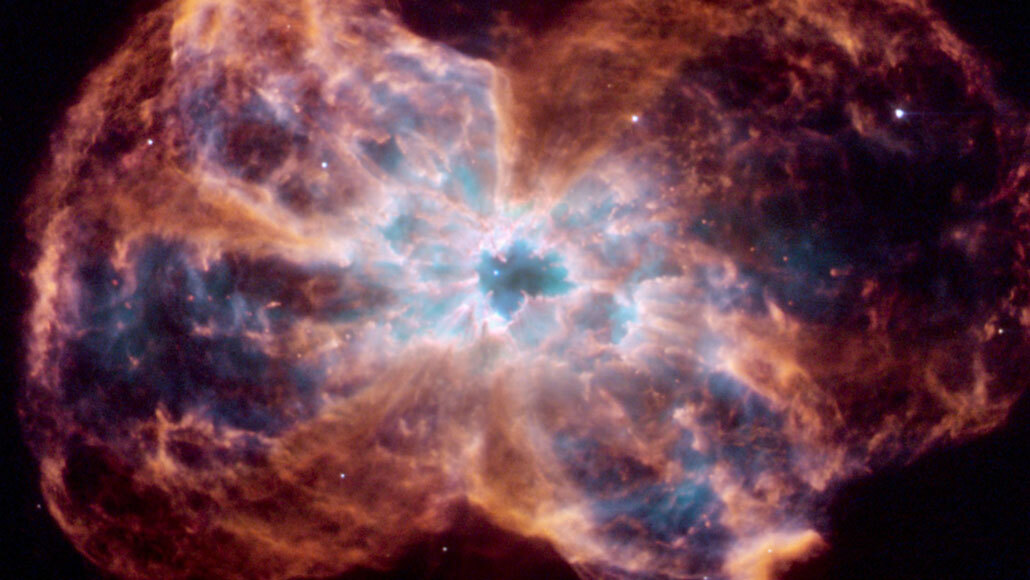
White dwarf stars, like the one inside the planetary nebula NGC 2440 (pictured), have a strange property — the more mass they gain, the smaller the stars get.
K. Noll/STScI, ESA, NASA
- More than 2 years ago
Read another version of this article at Science News Explores
Telescope observations have confirmed a weird property of white dwarf stars: As they pack on more mass, they shrink in size.
White dwarfs, the stripped cores of dead stars, are thought to have this counterintuitive quality because they contain an exotic material called degenerate electron gas. The more massive a white dwarf, the tighter its electrons must squeeze together to create an outward pressure strong enough to prevent the star from collapsing under its own weight.
Astronomers had observed evidence of this size trend, predicted by scientists decades ago, in a smattering of white dwarfs. But data on thousands of stars now show that the rule holds up across a sweeping range of white dwarf masses, Vedant Chandra and colleagues at Johns Hopkins University report online July 28 at arXiv.org.
Understanding how white dwarfs contract as they gain mass could give insight into the origins of type 1a supernovas, says astronomer and coauthor Hsiang-Chih Hwang. These supernovas are thought to occur when a white dwarf gets so massive and compact that it explodes, but no one knows exactly how white dwarf stars detonate (SN: 3/23/16).
The team examined the sizes and masses of over 3,000 white dwarf stars observed by the Apache Point Observatory in New Mexico and the European Space Agency’s Gaia space observatory. “If you know how far away a star is, and if you can measure how bright the star is, then you can get a pretty good estimate of its radius,” says Chandra, an undergraduate physics student. But measuring stellar masses proved trickier because astronomers usually need to see a white dwarf gravitationally tugging another star to get an idea of the white dwarf’s heft.
For solo white dwarfs, the researchers studied an effect of general relativity on starlight called gravitational redshift (SN: 7/26/18). As light escapes a strong gravitational field, like the one around a dense white dwarf, its waves get stretched out into redder wavelengths. The bigger a white dwarf’s mass compared with its radius, the more extreme the stretching. That property allowed the researchers to estimate the masses of white dwarf stars, given their radii.
The new white dwarf measurements closely match theoretical predictions for the smaller sizes of heftier stars. White dwarfs with about half of the sun’s mass were about 1.75 times as wide as Earth, while those with slightly more mass than the sun came in closer to 0.75 times Earth’s width.
It is reassuring to see white dwarfs following the general expected trend of downsizing as they pack on more mass, says Alejandra Romero, an astrophysicist at the Federal University of Rio Grande do Sul in Porto Alegre, Brazil. Future observations of more white dwarfs could help verify the finer points of this mass-radius relationship, she says — like whether hotter white dwarf stars are, as theory predicts, more puffed up than cooler stars of the same mass.







